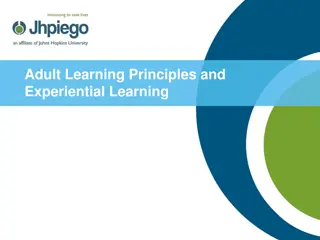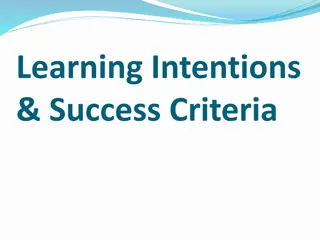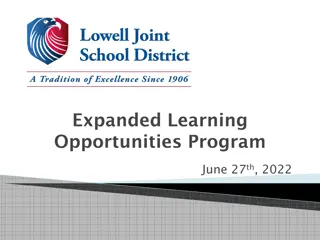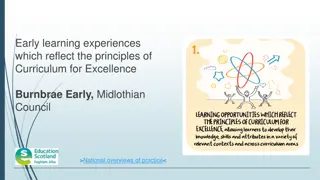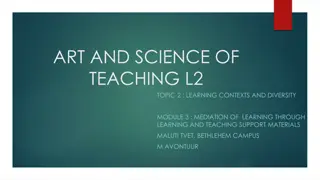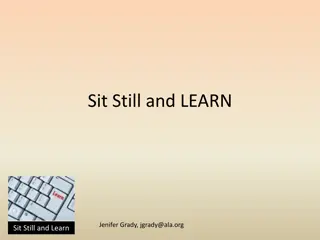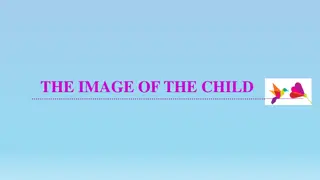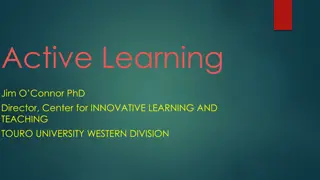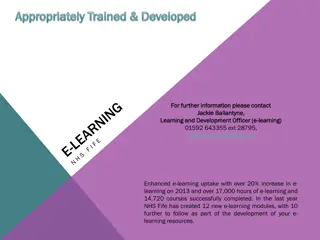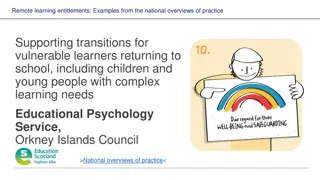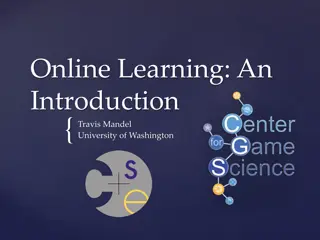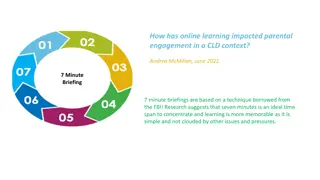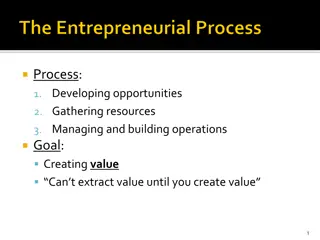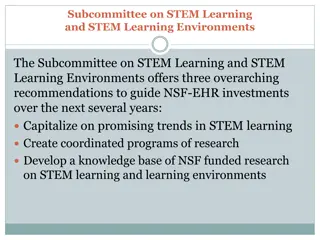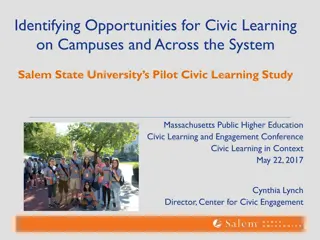Creating Learning Opportunities at Home
Remember, it's more important to focus on the kinds of experiences your children are having rather than replicating school curriculum. Children are resilient and learning is their default state. Embrace the opportunity to nurture different kinds of thinking through various activities that cater to their interests and passions. Avoid generic educational materials and prioritize engaging, diverse learning experiences tailored to your child's pace and preferences.
Download Presentation

Please find below an Image/Link to download the presentation.
The content on the website is provided AS IS for your information and personal use only. It may not be sold, licensed, or shared on other websites without obtaining consent from the author.If you encounter any issues during the download, it is possible that the publisher has removed the file from their server.
You are allowed to download the files provided on this website for personal or commercial use, subject to the condition that they are used lawfully. All files are the property of their respective owners.
The content on the website is provided AS IS for your information and personal use only. It may not be sold, licensed, or shared on other websites without obtaining consent from the author.
E N D
Presentation Transcript
Weve got this. So, you re learning at home. There are two things you need to know. First (and most importantly) don t worry there s an opportunity here for some of the best learning your child will ever experience. Second, remember that it s more important to pay attention to the kinds of experiences your children are having and to create opportunities for different kinds of thinking than to try to replicate school curriculum. 1
If youre panicking about your child being left behind or missing out on something they need to learn for the next grade, I m giving you permission to stop. Learning progressions in kindergarten through grade nine are less linear and sequential than most people believe, If you re worried that missing a piece of grade three science will make it impossible to understand science in grade four, for example, or that missing a few weeks of grade six math will undermine their high school experience, it won t. I promise. Breathe. 2
Children are resilient, and learning is their default state. As a parent, you know your child better than anyone in the world. Together, you are going to make this work. Unlike in typical classroom communities, you have the ability to follow your child s pace, answer their questions, follow their interests and indulge their passions. If you are caring for children in more than one grade, even better. Diversity strengthens learning. 3
As you start to sketch out a plan, consider thisits far more important to pay attention kinds of thinking your children are doing than the subjects they are studying. Don t go out and buy Canadian Curriculum workbooks or Scholastic kits, or sign up for Cool Math Games. These are the fast food of educational experience generic, low quality consumables that will have no positive, lasting impact on your child s growth and development. 4
Think of it like you would if you were using the Canada Food Guide to plan meals you ll want a wide range of thinking activities, recognizing that some are better for learning than others. Some of the experiences you plan with your child should involve creative, generative and divergent thinking; some should be more contemplative or reflective. Some experiences should involve experimentation, some should involve planning and problem solving, and some should be sensory or playful. You see where I m going with this? The next page has a few examples, but I was thinking over the next days and weeks I d post specific activities for different kinds of thinking, with ideas for how to make them work for our littlest to our biggest kids. 5
Here are a few examples of types of learning/thinking experiences it would be useful to create at home: Apprenticeship: Teach your child something you do well. (Can you do a French manicure? Change a tire? Shoot a three-pointer?) This is all about learning how to learn learning what to pay attention to, how to refine technique, and taking pride in a job well done. Place-Based Learning: Choose an outside space you will visit often; commit to spending long stretches of unhurried time there. This kind of thinking is about observation and reflection noticing small changes, considering relationships, and feeling connected to the world beyond oneself. Building/Making/Creating: A good chunk of each day should involve hands- on creation. Vary the materials it could be Lego one day, but experiment with shaving cream, blankets and bungee cords even mashed potatoes. This kind of thinking is bodily, experimental, expressive and problem-based. 6
Continued... Practicing: Spend some time each day using school skills your child has already developed gathering information from books, drawing and writing a journal, telling stories, playing with numbers, etc. This kind of thinking is about revisiting the familiar and trying it out in new contexts. Memorizing: Set aside a few minutes each day to memorize a line of a poem, a couple of bird calls, a portion of a speech, or the words to a song. Build on it each day. This kind of thinking is about hanging on to something beautiful making a connection that lasts. Contributing: Children belong to the world, and the world to them. They will be as interested in solving the problems we encounter as any adult. Engage them in finding ways they can make a difference. This kind of thinking is about empathizing, problem solving, strategizing, planning and generally being part of their communities, and the greater good. 7
Most teachers are still sorting out how to navigate this brave new world (we love you). If you are working with materials your child s teacher has provided, here are some basic tips to help you both get the most out of the experience: If you are caring for more than one child, engage them both with each others work. Learning with and from each other is important, and gaps in age or experience are often assets, not liabilities. Do more asking than telling. Ask about what they ve learned before, what experiences they ve had that seem connected, and what ideas they have about the work they re doing. Open-ended questions like, what are you thinking? and can you tell me more about that? often elicit the kind of information that will help you figure out how to move forward. If the invitation is there, help your child share their work with their teacher often. Depending on the digital platform available (D2L, Iris, Google), students can typically post samples, photos or videos of their learning This way, their teacher can stay in touch with their progress and can give valuable feedback. 8
For now, we are just getting organized for learning. Start by creating routines and rituals. They offer a sense of safety, security and predictability, which we all need in order to learn. Create a schedule with your child, including a week at a glance and specific plans for each day (I ll post samples!). Make note of the kinds of activities you plan to do, and give an approximate timeframe. Use the schedule as a point of reference as you work so that kids know what to expect and can see what they have accomplished. Kids learn all day long regardless of whether they re being taught. It s not necessary to attempt to create a six hour learning day a couple of hours in the morning, an hour in the evening and a balance of other activities throughout the day is more than enough. 9
When you carve out a portion of your day for school, create some opening and closing rituals. Create a simple starting routine we meet in the kitchen, for example, and get out our materials, and review the plan for the day. Close the learning time together with a similar ritual review the highlights and make a plan for tomorrow. As a rule of thumb, boredom is more likely to lead to good learning than anything you can find online. In between more formalized learning blocks, limit screen time and encourage reading, building, art-making, cooking, and outside time. When you are ready for resources, choose the very best. I ll start curating a list. For more information, email me: alisonvanrosendaal@gmail.com And really...you ve got this. Icons: Alex Muravev www.nounproject.com 10



